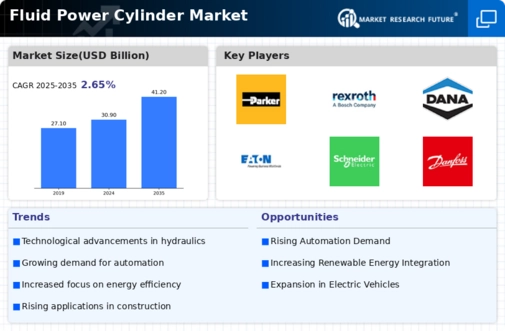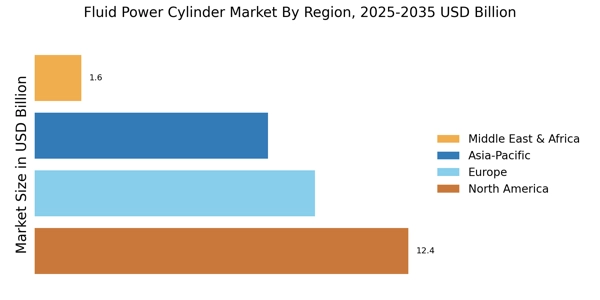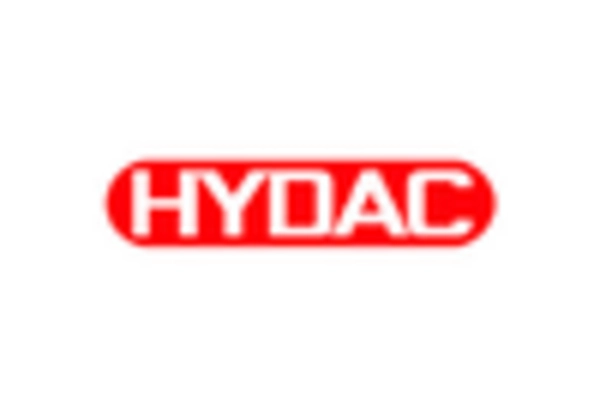Rising Demand in Automation
The increasing adoption of automation across various industries appears to be a primary driver for the Fluid Power Cylinder Market. As manufacturers seek to enhance efficiency and reduce operational costs, the integration of fluid power systems becomes essential. According to recent data, the automation sector is projected to grow at a compound annual growth rate of approximately 9% over the next five years. This growth is likely to spur demand for fluid power cylinders, which are integral to automated machinery and equipment. Consequently, the Fluid Power Cylinder Market is expected to witness a surge in demand as industries such as manufacturing, automotive, and aerospace increasingly rely on automated solutions to streamline operations.
Growth in Renewable Energy Sector
The expansion of the renewable energy sector is emerging as a significant driver for the Fluid Power Cylinder Market. As countries strive to transition towards sustainable energy sources, the demand for hydraulic systems in wind turbines and solar energy installations is likely to increase. Fluid power cylinders play a vital role in the operation of these systems, facilitating movement and control. Recent statistics suggest that investments in renewable energy are expected to exceed several hundred billion dollars over the next decade. This influx of capital into the renewable sector may lead to heightened demand for fluid power solutions, thereby positively impacting the Fluid Power Cylinder Market.
Infrastructure Development Projects
Infrastructure development projects are significantly influencing the Fluid Power Cylinder Market. Governments and private entities are investing heavily in infrastructure, including transportation, energy, and construction. This trend is likely to create a robust demand for fluid power cylinders, which are crucial in construction machinery, cranes, and other heavy equipment. Recent reports indicate that infrastructure spending is anticipated to reach trillions of dollars in the coming years, thereby providing a substantial boost to the Fluid Power Cylinder Market. As these projects progress, the need for reliable and efficient fluid power systems will become increasingly apparent, further driving market growth.
Increased Focus on Energy Efficiency
The growing emphasis on energy efficiency is becoming a crucial driver for the Fluid Power Cylinder Market. Industries are increasingly seeking solutions that minimize energy consumption while maximizing output. Fluid power systems, known for their efficiency in power transmission, are likely to see heightened interest as companies aim to reduce their carbon footprint. Recent analyses indicate that energy-efficient hydraulic systems can lead to savings of up to 30% in operational costs. This focus on sustainability and efficiency is expected to drive the Fluid Power Cylinder Market as businesses prioritize investments in technologies that align with their energy-saving goals.
Technological Innovations in Fluid Power Systems
Technological innovations within fluid power systems are likely to propel the Fluid Power Cylinder Market forward. Advancements such as smart sensors, IoT integration, and enhanced materials are transforming the capabilities of fluid power cylinders. These innovations not only improve efficiency but also reduce maintenance costs and enhance performance. The market for smart hydraulic systems is projected to grow significantly, with estimates suggesting a potential increase of over 15% annually. As industries adopt these advanced technologies, the Fluid Power Cylinder Market is expected to benefit from increased demand for high-performance fluid power solutions.


















Leave a Comment